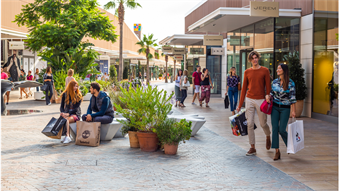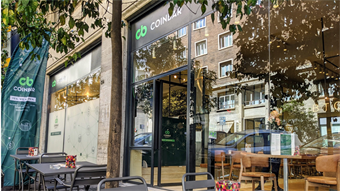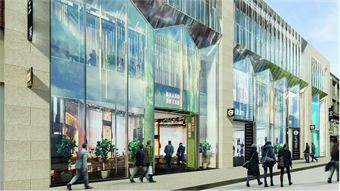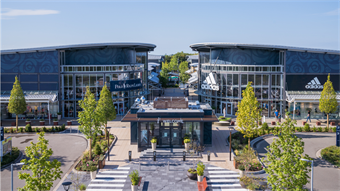The style tribe: retail’s new alliances
- In Strategy
- 09:10, 24 april 2018
- 5480 Views
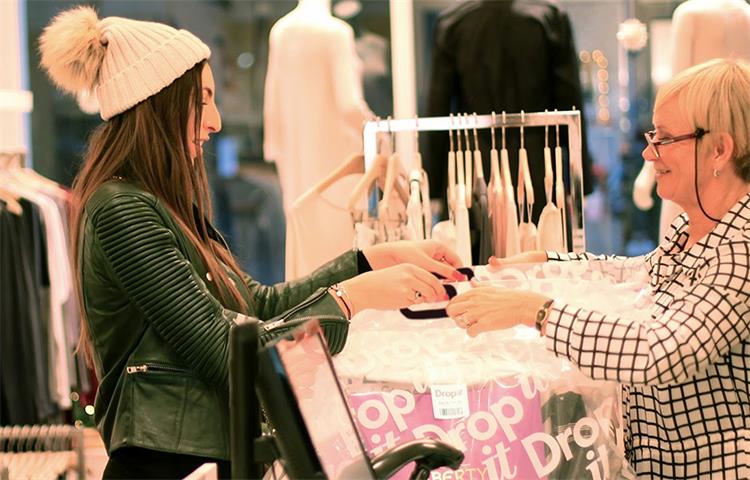
In the matrix world between online and offline, local and brand-savvy collaborations are driving the customer care revolution by harnessing digital tools in a whole new way.
Before online, there was only offline: driven by addictively good customer service, word-of-mouth, some traditional advertising, but most of all, the handshake and the smile to keep shoppers coming back.
In this retail world, the neighbourhood also represented an extra level of customer care: from recommending an adjacent store – a drycleaner, or a shoe repair workshop – to calling around other retailers to alert them to a shoplifter on the loose, a gas leak, or to coordinate Christmas lights.
Somewhere in the fast-paced world of the corporate chain and the online megastore, many of these qualities became rarefied. But the neighbourhoods themselves are now fighting back, with a new generation of alliances that combine digital tools with offline charm to win new business.
DROPIT
Dropit founder Karin Cabili recently identified a gap in the market to combine home delivery with the physical shopping experience in a transformative way.
The concept is simple: when you’re shopping in London’s West End, you can now choose to have all your purchases at participating stores delivered to your home or hotel that evening, or the day after, instead of taking them with you. Cabili describes it as ideal for shoppers who want to continue their evening at a bar, theatre or club, without being weighed down.
Buying a ‘day pass’ on the app costs just £10, and includes every aspect of the service: the courier rounds up your items from each shop and delivers them in a single load to the address of your choice, anywhere in the UK.
‘Since e-commerce appeared in the last 15 years, it’s affected three big markets – owners of retail real estate, retailers that now have to support an additional channel, and the courier companies that are responsible for fulfilling non-scheduled deliveries with increasing demands on their time,’ says Cabili.
‘At Dropit, we understand that 81% of fashion retail sales are completed in the physical world, not online, and only 3% of what is purchased offline goes back to the store. That compares to 40% of returns for online purchases.
‘That creates problems for the fashion industry, where seasons only last three months and lots of returns can leave retailers with a lot of stock on their hands at the season’s end. That’s why we see a lot more retailers shutting down and having difficulty to optimise their stock and deal with so many channels all of a sudden,’ she adds.
‘At Dropit, we understand that 81% of fashion retail sales are completed in the physical world’
Karin Cabili, Dropit
‘So what Dropit does is add another layer, opening opportunities for the courier companies and often helping stores close a sale, with the understanding that the shopping behaviour includes experience. People are now more and more used to getting deliveries, even if they’re still focused on making shopping journeys in the physical world. We add this element in an affordable way.’
From upscale brands like Barbour, Armani and Liberty, to GAP and Marks & Spencer on Oxford Street, hundreds of big names have signed up to be a part of the service.
‘We like to say that Dropit can make any woman feel like a pretty woman, even if she’s not Julia Roberts,’ says Cabili. ‘Someone will carry your bags for only £10 from all the stores. It’s a very special industry when you think about it – the client is the client of the retailer, while the retailer is the client of the property owner. But although they both share the same consumer, they don’t always work together enough in order to support that customer.
‘We’ve found a way to create a network between all the big brands and we’re adding more and more names on a daily basis. We’re also partnering with major shopping groups around the world, and looking at geographical expansion for the service.
‘Over the next 24 months, Dropit will be rolled out to other cities and regions in the UK, with European growth on the cards and future plans to build our business in the US and the Middle East.’
While Dropit is doing for the physical world what Asos and Net-A-Porter did for e-commerce, some of Europe’s most forward-looking shopping centres are reinventing omnichannel methods to deliver a superior customer service across their brand collectives.
THE LOBBY
Swedish property company AMF Fastigheter’s latest shopping destination, The Lobby in Stockholm, which opened on April 5, is designed to help independent brands grow and experiment.
Conceived as an experience-led marketplace, the open plan retail space is ‘simultaneously a store without boundaries and a test bed for ideas,’ says Annelie Gullström, business development manager at AMF.
The concept includes a plug-and-sell format which gives online brands access to all they need to ’set up shop’ physically – from staff to new technology and access to consumers. It will also provide a facility for technology companies to trial new technologies and products with established retail brands. Deloitte Digital is one of AMF Fastigheter’s main partners in this, providing data and tech know-how.
‘It’s simultaneously a store without boundaries and a test bed for ideas’
Annelie Gullström, AMF
Over 40 different brands, some of which will be making their debut in Sweden, have already signed up to take spaces ranging from a shelf to several square metres. The Lobby also has a Cava bar and a delivery point for ordered products.
Mats Hederos, CEO of AMF, said that the project was part of the company’s drive to be at the ‘forefront’ of retail innovation.
‘With The Lobby we have taken a step further and created a place where shopping and experiences are combined,’ he says. ‘Our long-term aim is to incorporate the concept into several of our shopping centres as we learn and prepare for the future of retail.’
London: New West End Company
Membership organisations such as the New West End Company are trying to deliver a level playing field for small and large retailers alike.
Working alongside the public sector and business partners, the collective represents, promotes and delivers a range of programmes and campaigns supporting retailers, other local businesses and London’s wider West End community.
It is also a collector and processor of data, delivering weekly and monthly trade intelligence reports, and capturing footfall figures and sales across the West End to its members.
It uses its lobbying powers to securing funding and investment opportunities to maintain the area’s position amongst the world’s top retail and leisure destinations.
Amsterdam: The Nine Little Streets
Amsterdam shopping district De Negen Straatjes (The Nine Little Streets) is a collective which started out as a branding exercise and has evolved into a fully-fledged neighbourhood tribe, according to Lony Scharenborg, manager of the Nine Little Streets.
‘It’s a name that the retailers and local businesses came up with,’ says Scharenborg. ‘It wasn’t created by the government, although these days, we’ve developed our own official signage. The idea came out of branding a dense, characteristic area which hadn’t been conceived as a city district.
The result is a an identity which also creates additional retail magic. ‘For customers, it’s really important that the area is organised. As a shopper, you’re walking somewhere with a charming atmosphere, that feels good. From coordinating Christmas lights to creating a sense of belonging, the store owners are proud of their own streets and feel like they’re a part of something.
‘I’m the manager, so I help coordinate everything, make sure that things are communicated well, and also lobby for material changes – for example, we’ve just managed to get the rubbish collection changed from big trucks to hand collection. Things like that make a difference.’
These days, the district is organised by digital means, giving it even more commercial power.
‘The public website really brings everything together – acting as an offline guide to all the stores, with links to all their webshops, for when you’re no longer in the area.
‘But behind the site for the public, there’s an even more ingenious platform. A couple of years ago we were struggling with the right way to enable all the retailers to communicate. We tried Facebook groups and other things, but it didn’t meet all our needs.
‘Then I met up with two students from the Delft University of Technology, who said they were working on a platform for internal communications for business groups. It sounded perfect for our needs, and it was!


